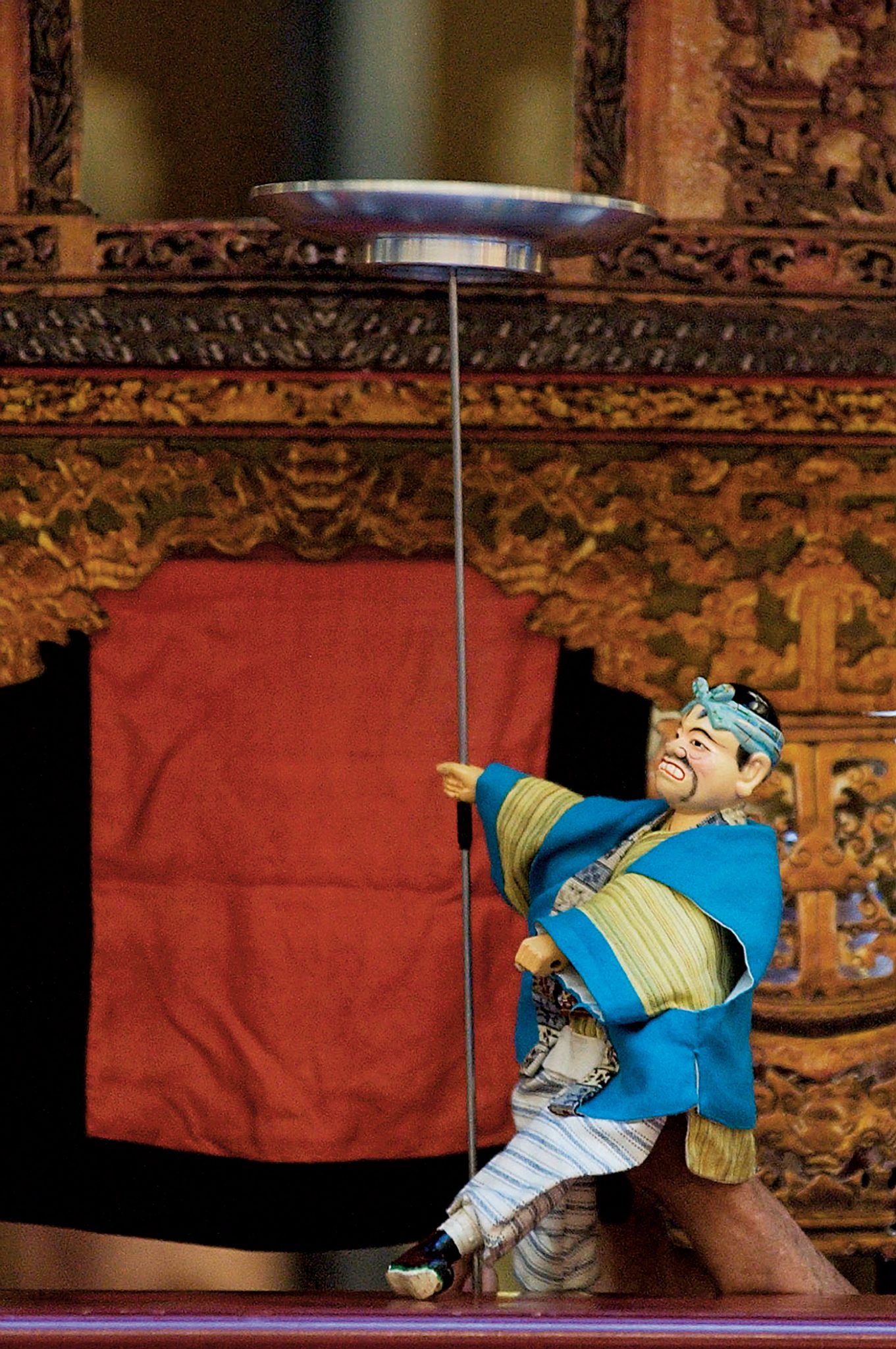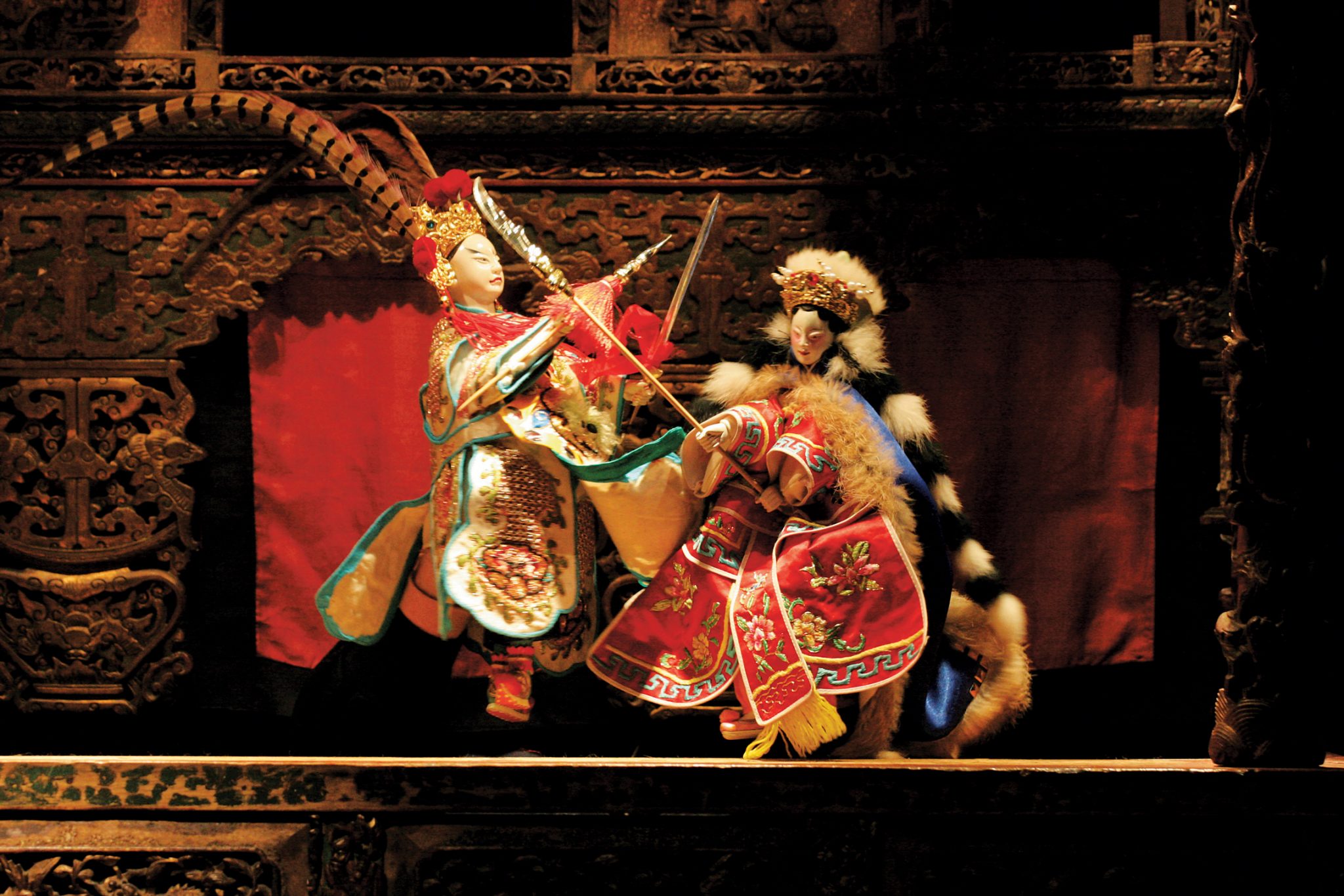THE POOR MAN’S OPERA: Glove puppet theatre as an aesthetic entertainment form

Glove puppetry had its origins, it is believed, in China during the 1300s. Later, in the early 1600s, droves of Han Chinese migrants had crossed over to Taiwan and amongst other skills, they had carried this unique art form with them.
It was evidently more practical for a puppetry troupe to travel than a large-scale opera troupe with all its props, costumes and musical instruments. It was soon to become one of the most popular forms of entertainment and flourish until the Japanese colonisation. During the 50 years of occupation [1895-1945] all forms of traditional Chinese/Taiwanese cultural expression was discouraged. To evade scrutiny, a few troupes resorted to themes that would appease the colonisers, only to gleefully switch gears to traditional themes with the departure of officials at performances. With the arrival of TV, notions of entertainment shifted drastically and the puppet theatre genre was deeply impacted. However, several troupes held on, led by the iconic puppet master Huang Hai-dai who cleverly adapted stories and special effects from celluloid. The Huang family’s telecasting in the 70s becoming so popular that often, critical tasks were abandoned by viewers to catch the programmes. Since then, this folk theatre form has been recognised substantially for its traditions and contemporary constructs, besides of course, the actual beauty of the crafted puppets.

In 2006, glove puppet theatre was chosen as the symbol that could best represent Taiwan in a national opinion poll by the Government Information Office. Puppet theatre gained over 130,000 votes, beating both the highest mountain [Jade Mountain] and the highest building [Taipei 101], which respectively became second and third. Puppet theatre is viewed as an expression of Taiwanese grass-roots culture and the puppets symbolise far more than the characters they represent. Politicians from different parties are eager to be photographed with a puppet or puppeteer during election season. Television puppet shows have unleashed a craze among young people, which is quite unique in Asia.
The first two plays that were created, Marco Polo and The Wedding of the Mice, used traditional techniques and puppets, but with modern stage techniques and design. These shows proved to be a great success and to date each show has been performed over a hundred times in over thirty countries worldwide.
The economic boom of Taiwan in the 80s led to a renewed interest in its own culture and roots. Puppet theatre always had an important status in Taiwan, because of its many companies [over 300 professional companies], its puppet television station and puppet film industry. Paul Lin, a Taiwanese art collector, once encountered a beautiful 19th century southern Chinese glove puppet; being confronted with the puppet was a moment that inspired all his collecting energy on the puppet theatre of Taiwan [and soon including the rest of Asia]. The collection grew steadily to almost 10,000 puppet theatre artifacts from all over Asia, with an emphasis on China and Taiwan. The Taiyuan Arts and Culture, founded by Paul Lin, attracted several specialists to take care of the collection. I was hired by the Taiyuan Foundation in 1997, after finishing my Ph.D. on marionette theatre in southern Fujian province in China.

The Taiyuan Puppet Theatre Company was founded in 2000, and its members were the old master Chen Xihuang, 83, young puppeteers and modern theatre trained actors and designers. The first two plays that were created, Marco Polo and The Wedding of the Mice, used traditional techniques and puppets, but with modern stage techniques and design. These shows proved to be a great success and to date each show has been performed over a hundred times in over thirty countries worldwide.
The Taiyuan Company also started an outreach school educational program. In 2000, the Tao-Thiu-Thia Puppet Centre [TTT Puppet Centre] was founded as an experimental puppet centre. The interactive nature of the exhibits combined with solid academic research of different puppet traditions resulted in a very successful mini-museum.
The museum now has the most complete collection of Asian puppet theatre artifacts in the world, with an emphasis on the puppet theatre traditions of Taiwan and China. This resulted in the publication of the book ‘Asian Theatre Puppets’ by Thames & Hudson in 2009.
By Robin Erik Ruizendaal. This article was first published in the Vol. 18/No.1, 2015 issue of International Gallerie – the global arts and ideas magazine.





